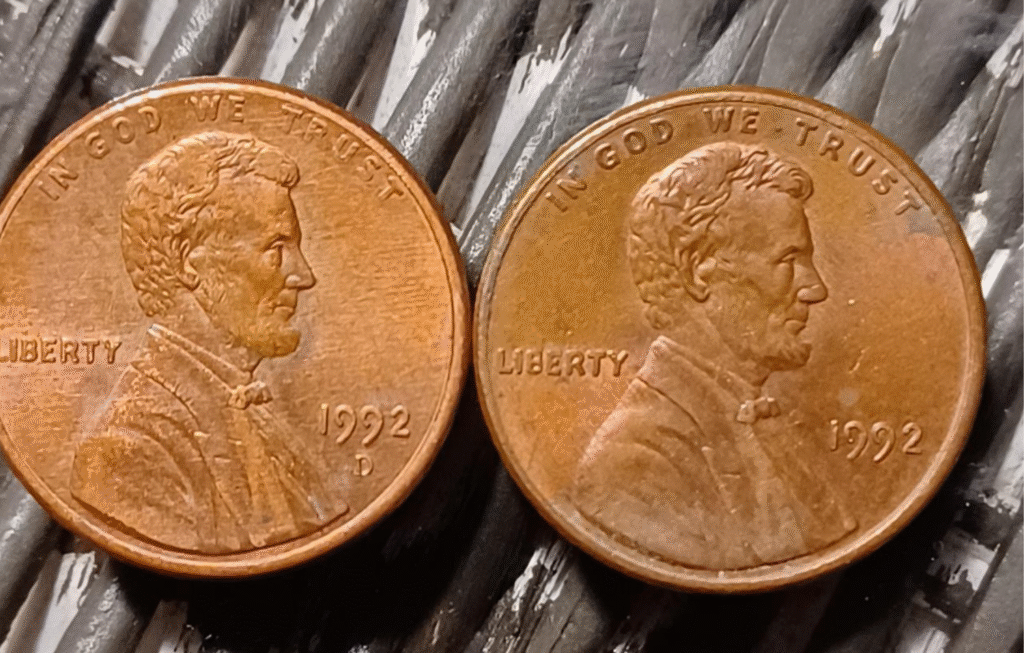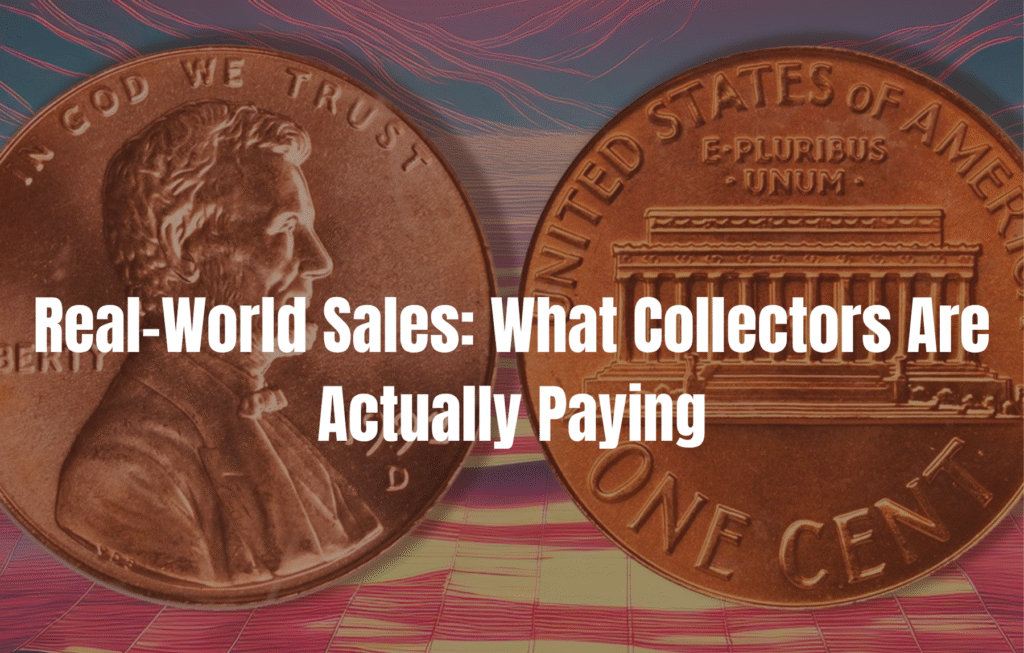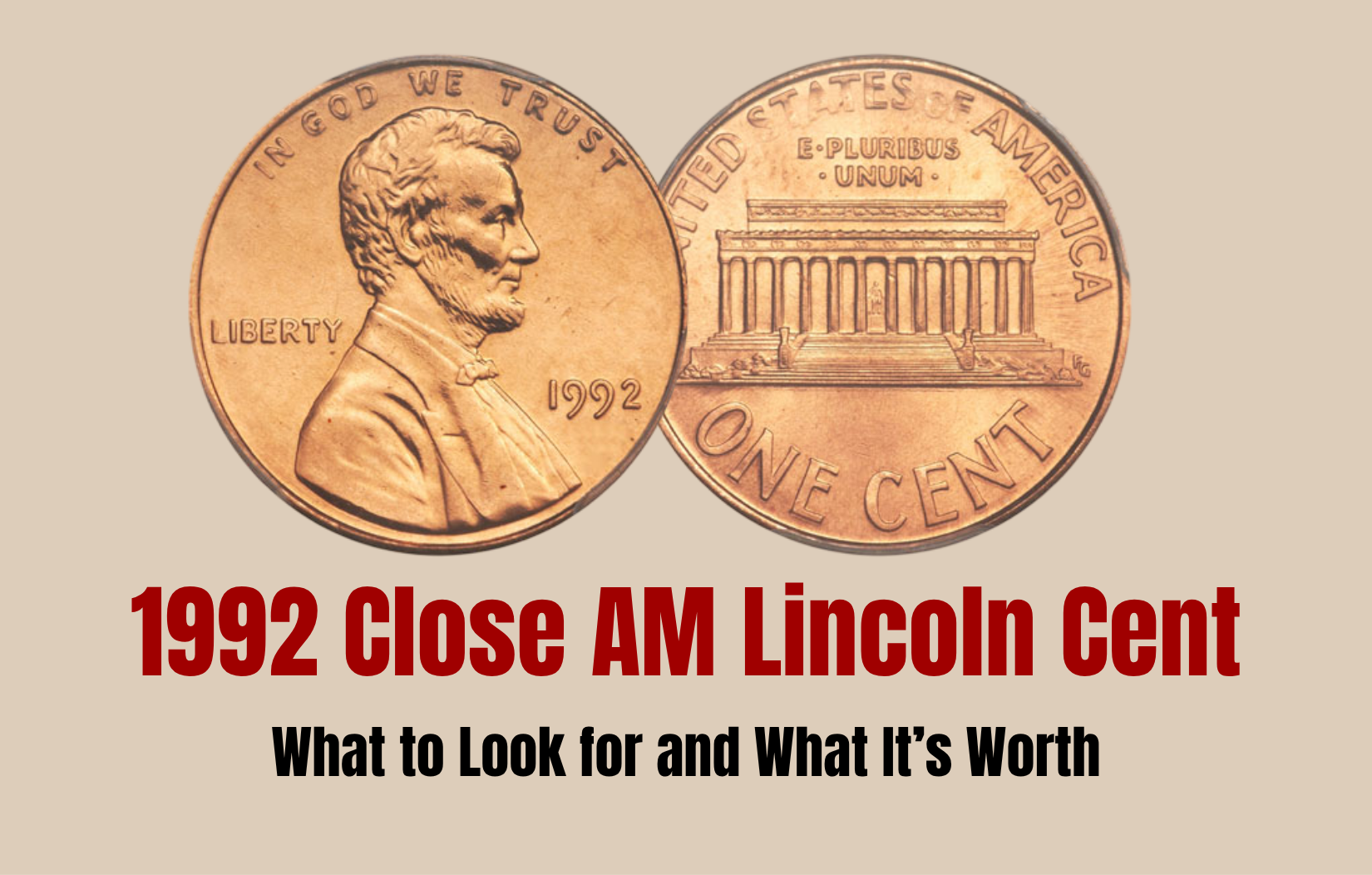1992 Close AM Lincoln Cent — Cherrypick Guide and Real‑World Sales
What Is the “Close AM” 1992 Penny?
In 1992, Lincoln Memorial cents were struck with a standard reverse design (called “Wide AM”), in which the letters “A” and “M” in AMERICA have a noticeable gap. But a small handful of 1992 cents were struck using a proof or transitional reverse die where the “A” and “M” are extremely close, nearly touching. This is called the Close AM variety (also cataloged as FS‑901 in some error‑collector references).
These “Close AM” 1992 pennies are not common, and because the difference is subtle yet meaningful to die collectors, they command a significant premium when verified in good condition.
Why Close AM Matters: The Story Behind the Error
- The Close AM die was intended for proof coins or units struck in later years (1993 and beyond). A limited number of circulation strikes in 1992 were made using that die in error, creating a transitional variety.
- Most business‑strike 1992 cents were struck with what’s called the “Wide AM” reverse. The Close AM examples are considered anomalies or transitional errors.
- Because the difference involves letter spacing and die alignment, one of the key distinguishing features is how tightly the “A” and “M” in AMERICA are placed—and closely related to how the FG (designer’s initials) hang relative to the Lincoln Memorial.
Fewer than 20 examples of the 1992 Close AM (from Philadelphia) are graded, while the Denver Close AM sees somewhat more examples through grading services.
Because of that scarcity, well-preserved examples have sold publicly for five-figure sums.
How to Spot a 1992 Close AM: Key Diagnostic Features

To detect a Close AM, you’ll need magnification, good lighting, and a careful eye. Here are the most important traits to check:
1. Spacing Between A and M in AMERICA
- On a standard (Wide AM) 1992 penny, there is visible separation—space—between the bottom of the “A” and the “M.”
- On a Close AM, the letters are very tight: nearly touching or with a minimal gap. This is the hallmark feature.
- Under magnification, you may see just a hair’s width or even a connecting line between A and M in strong Close AM examples.
2. FG Initials & the Memorial Base
- Compare where the “FG” (Frank Gasparro’s initials) are positioned relative to the base of the Lincoln Memorial. On many Wide AM examples, the FG is closer to the base; on Close AM varieties, it’s slightly farther from the base.
- The shape of the “G” in FG may differ subtly: in Wide AM, the G may be flared and with serifs; in Close AM, more straight and with tighter features.
3. Corners and Letter Shape Differences
- The AMERICA letters might also show subtle shape differences—serifs, curvature, and thickness—when compared to standard examples.
- In some Close AM varieties, the spacing between “RICA” letters and the adjacent portions of the design may be adjusted, reflecting that transitional reverse die.
4. Condition / Strike Quality
- Because Close AM is rare, it often appears in specimens that were well handled, lightly circulated, or carefully preserved. Sharp, unblemished examples will command the highest premiums.
- Look for strong strikes, minimal wear, original luster (if possible), and no cleaning or damage.
5. Mintmark Variant
- Close AM errors exist on both Philadelphia (no mint mark) and 1992‑D (Denver) strikes.
- The 1992‑D Close AM is rarer in business strike form and is highly prized by error collectors.
- Always check under the date for a “D” mintmark, which can increase value.
6. Avoid Pitfalls: Know What Isn’t Close AM
- Slight wear, toning, or superficial damage can make even a Wide AM look tighter—don’t mistake that for a true Close AM.
- Fake alterations: Some coins have been modified or tampered with to appear as Close AM.
- Misalignment: Some coins may have their reverse slightly misaligned, which is not the same as the true Close AM variety.
Real-World Sales: What Collectors Are Actually Paying

The premium that Close AM 1992 pennies command is very real despite the limited number of examples. Here are notable auction results and verified sales to guide you:
- 1992‑D Close AM, MS‑64 Red/Brown: approximately $20,700 at auction.
- 1992 (Philadelphia, Close AM), MS‑67 Red: approximately $24,056 sold on eBay.
- 1992 Close AM, RB (PCGS MS‑62): sold for $8,250.
- 1992 Close AM (BN, lower grade, PCGS Genuine): sold for $724.50.
According to general pricing:
- A circulated 1992 Close AM in AU55 BN might fetch around $2,500.
- In MS63 Red designation, Philadelphia Close AM examples might be $7,000 or more; Denver Close AM in MS63 may be around $3,750.
- One exceptional example (PCGS MS67 Red) commanded $25,850 in 2017.
These real-world benchmarks help anchor what you might expect when you find or buy a Close AM 1992 penny.
Cherrypick Guide: How to Search and Identify in Your Own Coins
Looking through rolls or collections, here’s a step-by-step approach to increase your chances:
- Focus on 1992 or 1992-D coins
Only these years can carry the Close AM variety. - Use a good loupe or magnifier (5×, 10×)
A quality magnifier is essential to see the tight A–M gap. - Examine the Reverse (back side) first
Flip the coin and inspect AMERICA. Direct your attention to the area between the “A” and “M.” If it looks unusually tight or almost touching, flag it. - Check the FG initials
Look at how FG sits relative to the Memorial’s base. Slight distance may hint at Close AM. - Check for mintmark
If there’s a “D” under 1992, you may have found a 1992-D Close AM, which is rarer. - Move to obverse (front) and check condition
If the reverse shows potential, check the front for wear, damage, or signs of alteration. Avoid coins with heavy damage. - Document with photos
Photograph both sides under good lighting, especially the A–M junction and FG area. - Submit for grading/authentication
If your coin shows a strong Close AM appearance and is in good condition, send it to PCGS, NGC, or another coin grading service. Certified examples command much higher prices. - Compare to known reference images and past sales
Use auction archives and coin‑error databases to see matching Close AM examples. That can help validate your find. - Be cautious with hype claims
Some listings inflate potential values or mislabel Wide AM as Close AM. Only rely on authenticated and graded specimens.
Things to Beware: Myths & Overstatements
- Some online sources claim astronomical values like $554,000 for a 1992 Close AM penny. These are likely exaggerations or misinterpretations of rare sale extremes. Realistic top-tier values are in the tens of thousands.
- Not every penny with a seemingly tight “AM” is genuine—many false positives occur due to wear, lighting, or deceptive photos.
- Some coins may show duplication or distortion that mimics Close AM; don’t confuse those with true die variety.
Why This Variety Captures Collectors’ Imagination
- It illustrates how minor die usage errors (mixing proof/regular dies) can create collectable transitional coins.
- The subtle design difference makes it a challenge to spot—many collectors refer to it as a “hidden treasure.”
- Given that only a handful of examples exist and far fewer in high grade, every example is significant in the error‑coin community.
- The rarity, prestige, and drama of owning one make Close AM 1992 pennies popular among specialists of modern Lincoln errors.
Summary & Final Tips
- The 1992 Close AM is a rare, transitional error variety where the A and M in AMERICA on the reverse are very tightly spaced, nearly touching.
- It exists in both Philadelphia and Denver mint issues, though Philadelphia examples are especially scarce.
- Strong specimens in uncirculated condition have fetched $8,000 to $25,000 or more in real auctions. The top-tier example reached $25,850.
- To find one, examine 1992 pennies you own under magnification, compare the AM spacing and FG placement, and submit good candidates for third‑party grading.
- Use reputable auction archives and error‑coin databases to compare your find with verified examples.
FAQs
What is a 1992 Close AM penny?
A rare transitional error where the “A” and “M” in AMERICA on the reverse are very close, nearly touching—unlike the standard Wide AM.
Why is the 1992 Close AM penny valuable?
It’s rare, with very few known examples. Collectors prize it due to its unique die usage error and transitional status between design generations.
How many 1992 Close AM pennies exist?
Fewer than 20 Philadelphia examples are graded; Denver issues are slightly more common but still extremely rare, with limited authenticated specimens in any condition.
